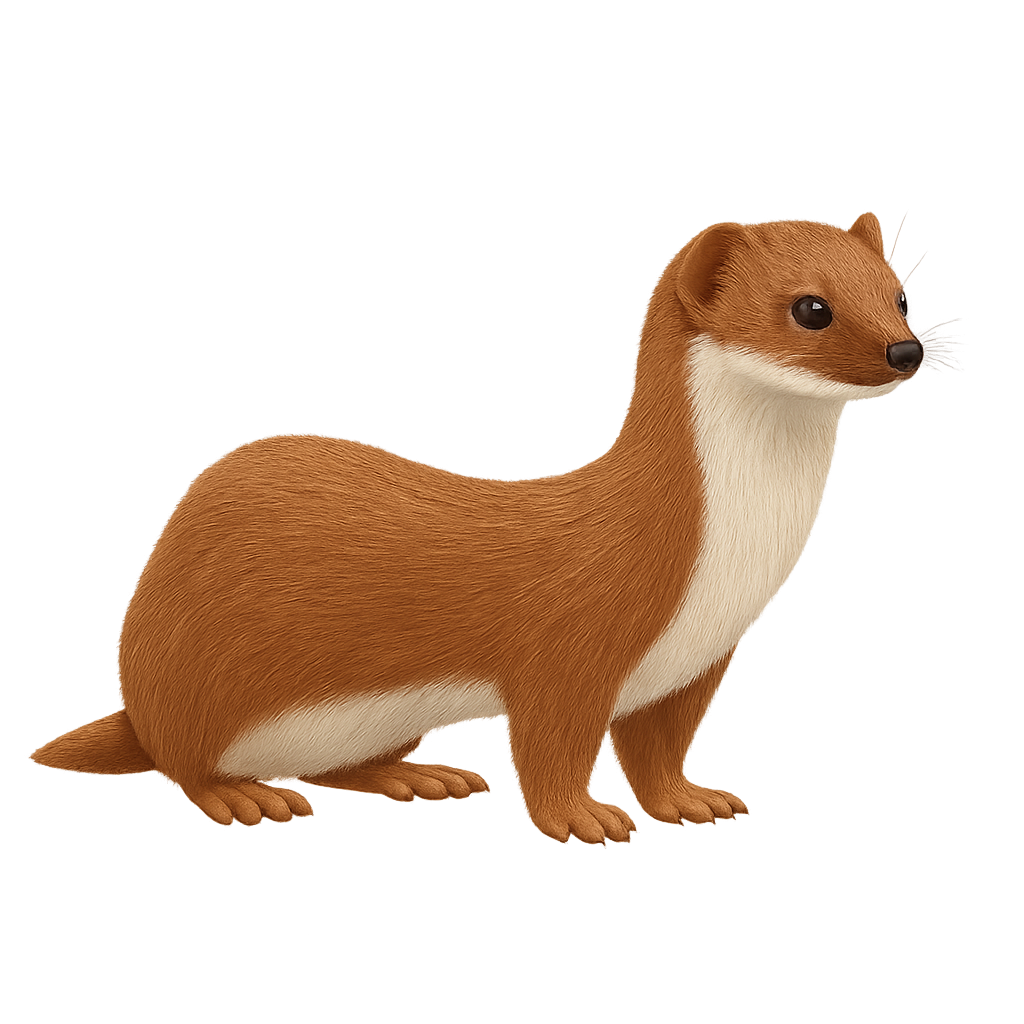Your wildlife photography guide.
Explore the least weasel in detail, study its behavior, prepare your shots.
Where to observe and photograph the least weasel in the wild
Learn where and when to spot the least weasel in the wild, how to identify the species based on distinctive features, and what natural environments it inhabits. The WildlifePhotographer app offers tailored photography tips that reflect the least weasel’s behavior, helping you capture better wildlife images. Explore the full species profile for key information including description, habitat, active periods, and approach techniques.
Least Weasel
Scientific name: Mustela nivalis

IUCN Status: Least Concern
Family: MUSTELIDAE
Group: Mammals
Sensitivity to human approach: Suspicious
Minimum approach distance: 10 m
Rut period: April to August
Gestation: 34-37 jours
Births: May to September
Habitat:
Varied habitats: forests, hedgerows, and countryside
Activity period :
Mainly active at night, generally discreet during the day.
Identification and description:
The European Weasel is the smallest carnivore in Europe, easily recognizable by its tiny size and brown coat with a white throat and belly. It primarily inhabits a variety of environments such as forests, meadows, and agricultural areas, where it hunts small mammals, birds, insects, and eggs. Agile and fast, the European Weasel is a stealthy hunter, capable of slipping into tight spaces to capture its prey.
Solitary and territorial, the European Weasel is active both day and night, and it uses its own burrows or those of other animals to hide and rest. Though small, it is a formidable predator, often seen as beneficial for regulating small rodent populations. However, it can be threatened by habitat destruction and changes in agricultural practices.
Recommended lens:
400 mm – adjust based on distance, desired framing (portrait or habitat), and approach conditions.
Photography tips:
Approach slowly and discreetly, using a telephoto lens, as the common weasel is a very fast and reactive animal. It can quickly flee if it feels threatened.
Photograph early in the morning or late in the afternoon, when the light is softer and the weasel is more active searching for food.
Capture moments of activity: The weasel is an agile hunter, often seen rummaging through bushes or undergrowth in search of small rodents. Wait for it to be engaged in this activity for natural photos.
Be patient: Being very discreet, the weasel can be hard to spot. Wait until it is in a favorable position for photographing.
The Common Weasel is a species of minor concern, but it is important to respect its natural space. Do not disturb its hunting or resting behaviors, and ensure you do not interfere with its habitat. Follow local conservation rules to preserve this species.
The WildlifePhotographer App is coming soon!
Be the first to explore the best nature spots, track rutting seasons, log your observations, and observe more wildlife.
Already 1 439 wildlife lovers subscribed worldwide

